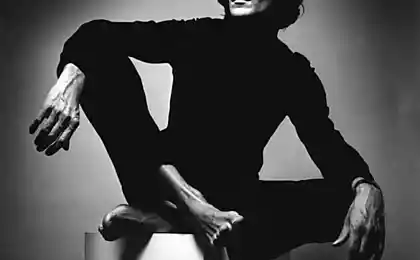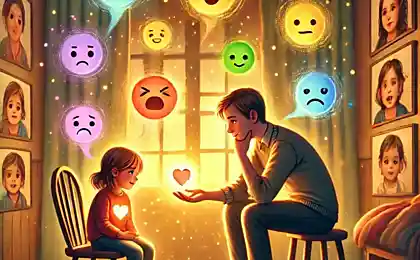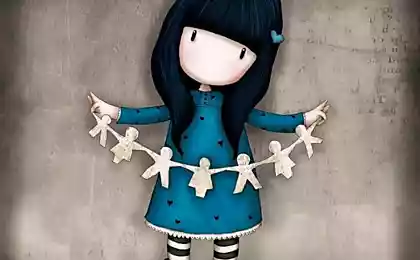1198
Facts about emotions and instincts
According to one of the Greek myths, many disease strikes humanity descended on humanity as a result of manifestation of negative emotions such as revenge, malice and envy, which were released goddess Pandora. Ancient doctors believed that the various organs of control various moods. For example, happiness comes from the heart, anger from the liver fear from the kidneys ...
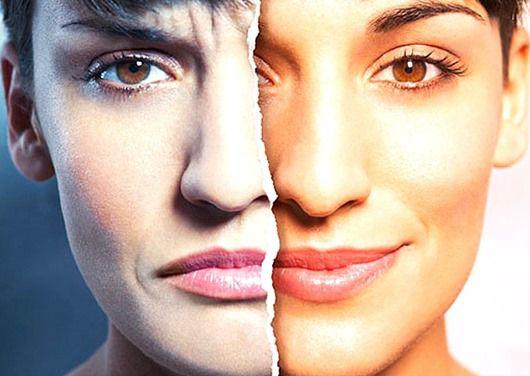
Emotions are usually defined as reaction to stimuli, and include physiological changes (increase in heart rate, activity of certain glands, change in respiratory rate increased body temperature) that motivate a person to operate. Simply put, the emotion - a feeling of mind, the equivalent of the physical sensations of the body.
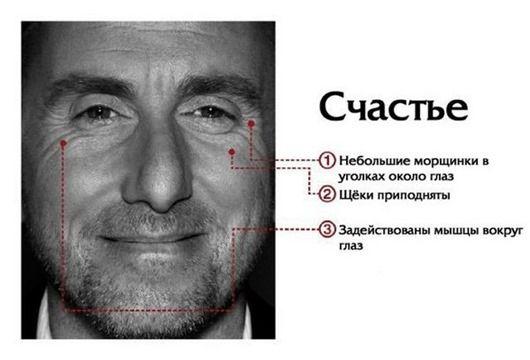
In the 17th century, Rene Descartes considered human emotions as the hydraulic system. He believed that a person feels anger or sadness, because the respective inner flaps opened and released liquids such as bile and phlegm.
According to a study conducted by the Journal of Consumer Research (Journal of Consumer Research), people who think more abstractly, more responsive to advertising, which is based on the mixed emotions, as compared to those who think more concretely.
Recent studies have shown a direct link between the wearing of certain clothing, and emotional states. For example, women who are depressed or sad mood is likely to prefer baggy tops, jackets or jeans. Women in high spirits, most likely, will choose your favorite dress, jewelry and even sleeker look.
The word "emotion" comes from the Latin emovere, "to move down, delete, campaigning" from ex- "out" and movere "move".
The word "instinct" comes from the Latin instinctus, meaning "incitement momentum," associated with the Proto-Indo-European steig - "prick, puncture, stick".
Studies show that new technologies, such as social networks, promote greater emotional fragmentation, loneliness people.

Emotional abuse is similar to brainwashing, because its aim is a gradual decline in a person's confidence in himself, his self-respect and self-esteem. Emotional abuse can take many forms, including the use of financial power to control a person, threats to quit, humiliation of human dignity, constant criticism, circulation by name or cry.
In any emotion there are three components: 1) physiological changes (such as increased heart rate) 2) behavioral response - for example, the desire to get away from the source of the emotion or stay in contact with him and 3) subjective feelings, such as anger, happiness or sadness .
Historically, among psychologists that there is no consensus about when there are emotions before the action directly at the same time as the action or in response to an automatic physiological process.
Most neurobiologists distinguish between the terms "emotion" and "feeling." They use the word "emotion" to describe the automatic (unconscious) the brain's response to certain stimuli, and "feeling" to describe our conscious experience and reaction.
Charles Darwin believed that emotions were useful for evolution, because they increase the chances of survival. For example, the brain uses emotions to keep us away from a dangerous animal (fear), away from the rotting food and faeces (disgust), to control our resources (anger), to get a good meal or find a sexual partner (pleasure and lust).
Usually if people change their facial expressions, to express emotions, they actually begin to feel these emotions.

Types of triggers that people evolutionarily trained to fear, as the cells with snakes, cause internal response, even though people know that they are relatively safe at the cognitive level. However, people are much less responsive to a truly dangerous risks to which evolution has not prepared them, such as hamburgers, smoking and unsafe sex in spite of that, most people recognize the danger at the cognitive level.
Most scientists believe that the basic emotions are innate, not acquired is. For example, people who are born blind and had never seen those shows typical facial expressions of basic emotions.
Robert Plutchik in 1980 in his research work proposed eight major congenital emotions: joy, understanding, fear, surprise, sadness, disgust, anger, and waiting. He suggested that the complex emotions, such as guilt and love are derived from combinations of primary emotions.
Expression and experience negative emotions (eg, depression or anxiety), accompanied by a higher activation of the right frontal lobe of the cerebral cortex, as well as its deeper structures, such as the amygdala and the expression of positive emotions - a greater degree of activation of the left frontal lobe of the brain .
Colors can significantly affect the emotional reactions. Although, of course, not all people experience the same emotions at the same color, most people find exciting red and orange and blue and purple - soothing. A gray, brown, black and white, tend to cause emotional blunting. Studies show that children playing in the orange room were more friendly, agile, creative and less irritable than children who played in the rooms with white, brown and black walls.

When people try to hide strong emotions tend to be seen "microexpressions" - the emotions, overlooked by people unwittingly, and lasting only 1/24 of a second.
Emotions are contagious. Negative or unpleasant emotions more contagious than neutral or positive.
Only people express surprise, his mouth agape. But if you talk about other emotions, it seems, they have people and animals more similarities than differences. This is especially true similarity of primates and humans in anger, fear, happiness, and sadness. In fact, since animals and people express similar types of emotion, Charles Darwin thought that emotional difference between animals and humans is largely at ease and not the types of emotions.
Mothers are less tolerant of crying boys than girls. This may indicate that a way of expressing emotion adult education of the mother is formed in early childhood.
Men and women experience the same emotions, but women tend to be more inclined to show them off.
Visually attractive advertising of junk food on the menu is designed to ensure that arouse emotions in consumers. Scientists say that if people understood the emotions better, they would have been much more picky about food.
Many psychologists believe instinct and emotions are similar because both appear automatically. For example, fear - that emotion and instinct. The difference is that the instincts are immediate, irrational and innate, while emotions are much more rational, they represent a complex feedback system biology, behavior and cognition.

Botox injections can reduce the signs of aging, but they do face a person less safe and more impassive. Paradoxically, less lively people are less attractive to others.
Although scientists have not found a culture in which people smile when they feel disgust, or frown when they are happy, they still find some oddities. For example, the Japanese is much harder than the Americans to show their anger on his face, and they are, as a rule, try not to show their dislike of expression.
Of all the facial expressions smile can be the most deceptive. There are about 18 different smiles, including courteous, cruel, false, modest, and so on. But only one reflects the true happiness, it is known as a Duchenne smile, and is named after the French neurologist Guillaume Benjamin Duchenne de Boulogne Haman, who first described this phenomenon.
Emotion is most closely associated with fear - it's interest. Some psychologists even believe that the fear has two sides: one - the desire to run, and the other - the desire to explore.
Plato describes the emotions and the mind, as the two horses that drag a man in different directions. However, the neurologist Antonio Damasio modern claims that the mind is based on emotions and not their antagonist.
Body language often gives emotions. For example, a man standing with hands on hips elbows outward shows an example of the designated areas. If someone held up a hand, it means that he or she wants to say something. Touching the nose means that the person has something to hide. On the feet, too, can read body language signals.

Studies show that people will recognize and interpret facial expressions of emotion in people of the same race as themselves than those of other races.
Since the days of silent movies to cartoons such as "Tom and Jerry" and films such as "Psycho" and "Jaws" music is a widely used stimulus that causes a variety of emotional reactions. Generally, in a major music reflects happiness, while music in a minor key - sadness. The voice, too, reflects the key. Interestingly, some of the emotional tone of the music is cross-cultural.
A study of people with amnesia has established that the emotions associated with the memory experienced memories created them. The researchers said it is important for those who suffer from Alzheimer's disease.
Using the site WeFeelFine.org, scientists from Stanford University have analyzed about 13 million of emotions that were recorded in different commercials Internet since 2005. They found older people tend to be happier young, but their happiness is due to different reasons. Young people are happy when they are excited, older people are happier when they are at rest. In addition, women tend to feel more loved, than men, but feel guilty to a greater extent. Men often feel happier, but more lonely. The researchers also found that the happiest time of the day - lunch.

With the help of facial expressions a person can express more than 10,000 emotions.
Some scholars argue that a person always has some kind of emotion, but they are too small to be seen or influence what we do.

Emotions are usually defined as reaction to stimuli, and include physiological changes (increase in heart rate, activity of certain glands, change in respiratory rate increased body temperature) that motivate a person to operate. Simply put, the emotion - a feeling of mind, the equivalent of the physical sensations of the body.

In the 17th century, Rene Descartes considered human emotions as the hydraulic system. He believed that a person feels anger or sadness, because the respective inner flaps opened and released liquids such as bile and phlegm.
According to a study conducted by the Journal of Consumer Research (Journal of Consumer Research), people who think more abstractly, more responsive to advertising, which is based on the mixed emotions, as compared to those who think more concretely.
Recent studies have shown a direct link between the wearing of certain clothing, and emotional states. For example, women who are depressed or sad mood is likely to prefer baggy tops, jackets or jeans. Women in high spirits, most likely, will choose your favorite dress, jewelry and even sleeker look.
The word "emotion" comes from the Latin emovere, "to move down, delete, campaigning" from ex- "out" and movere "move".
The word "instinct" comes from the Latin instinctus, meaning "incitement momentum," associated with the Proto-Indo-European steig - "prick, puncture, stick".
Studies show that new technologies, such as social networks, promote greater emotional fragmentation, loneliness people.

Emotional abuse is similar to brainwashing, because its aim is a gradual decline in a person's confidence in himself, his self-respect and self-esteem. Emotional abuse can take many forms, including the use of financial power to control a person, threats to quit, humiliation of human dignity, constant criticism, circulation by name or cry.
In any emotion there are three components: 1) physiological changes (such as increased heart rate) 2) behavioral response - for example, the desire to get away from the source of the emotion or stay in contact with him and 3) subjective feelings, such as anger, happiness or sadness .
Historically, among psychologists that there is no consensus about when there are emotions before the action directly at the same time as the action or in response to an automatic physiological process.
Most neurobiologists distinguish between the terms "emotion" and "feeling." They use the word "emotion" to describe the automatic (unconscious) the brain's response to certain stimuli, and "feeling" to describe our conscious experience and reaction.
Charles Darwin believed that emotions were useful for evolution, because they increase the chances of survival. For example, the brain uses emotions to keep us away from a dangerous animal (fear), away from the rotting food and faeces (disgust), to control our resources (anger), to get a good meal or find a sexual partner (pleasure and lust).
Usually if people change their facial expressions, to express emotions, they actually begin to feel these emotions.

Types of triggers that people evolutionarily trained to fear, as the cells with snakes, cause internal response, even though people know that they are relatively safe at the cognitive level. However, people are much less responsive to a truly dangerous risks to which evolution has not prepared them, such as hamburgers, smoking and unsafe sex in spite of that, most people recognize the danger at the cognitive level.
Most scientists believe that the basic emotions are innate, not acquired is. For example, people who are born blind and had never seen those shows typical facial expressions of basic emotions.
Robert Plutchik in 1980 in his research work proposed eight major congenital emotions: joy, understanding, fear, surprise, sadness, disgust, anger, and waiting. He suggested that the complex emotions, such as guilt and love are derived from combinations of primary emotions.
Expression and experience negative emotions (eg, depression or anxiety), accompanied by a higher activation of the right frontal lobe of the cerebral cortex, as well as its deeper structures, such as the amygdala and the expression of positive emotions - a greater degree of activation of the left frontal lobe of the brain .
Colors can significantly affect the emotional reactions. Although, of course, not all people experience the same emotions at the same color, most people find exciting red and orange and blue and purple - soothing. A gray, brown, black and white, tend to cause emotional blunting. Studies show that children playing in the orange room were more friendly, agile, creative and less irritable than children who played in the rooms with white, brown and black walls.

When people try to hide strong emotions tend to be seen "microexpressions" - the emotions, overlooked by people unwittingly, and lasting only 1/24 of a second.
Emotions are contagious. Negative or unpleasant emotions more contagious than neutral or positive.
Only people express surprise, his mouth agape. But if you talk about other emotions, it seems, they have people and animals more similarities than differences. This is especially true similarity of primates and humans in anger, fear, happiness, and sadness. In fact, since animals and people express similar types of emotion, Charles Darwin thought that emotional difference between animals and humans is largely at ease and not the types of emotions.
Mothers are less tolerant of crying boys than girls. This may indicate that a way of expressing emotion adult education of the mother is formed in early childhood.
Men and women experience the same emotions, but women tend to be more inclined to show them off.
Visually attractive advertising of junk food on the menu is designed to ensure that arouse emotions in consumers. Scientists say that if people understood the emotions better, they would have been much more picky about food.
Many psychologists believe instinct and emotions are similar because both appear automatically. For example, fear - that emotion and instinct. The difference is that the instincts are immediate, irrational and innate, while emotions are much more rational, they represent a complex feedback system biology, behavior and cognition.

Botox injections can reduce the signs of aging, but they do face a person less safe and more impassive. Paradoxically, less lively people are less attractive to others.
Although scientists have not found a culture in which people smile when they feel disgust, or frown when they are happy, they still find some oddities. For example, the Japanese is much harder than the Americans to show their anger on his face, and they are, as a rule, try not to show their dislike of expression.
Of all the facial expressions smile can be the most deceptive. There are about 18 different smiles, including courteous, cruel, false, modest, and so on. But only one reflects the true happiness, it is known as a Duchenne smile, and is named after the French neurologist Guillaume Benjamin Duchenne de Boulogne Haman, who first described this phenomenon.
Emotion is most closely associated with fear - it's interest. Some psychologists even believe that the fear has two sides: one - the desire to run, and the other - the desire to explore.
Plato describes the emotions and the mind, as the two horses that drag a man in different directions. However, the neurologist Antonio Damasio modern claims that the mind is based on emotions and not their antagonist.
Body language often gives emotions. For example, a man standing with hands on hips elbows outward shows an example of the designated areas. If someone held up a hand, it means that he or she wants to say something. Touching the nose means that the person has something to hide. On the feet, too, can read body language signals.

Studies show that people will recognize and interpret facial expressions of emotion in people of the same race as themselves than those of other races.
Since the days of silent movies to cartoons such as "Tom and Jerry" and films such as "Psycho" and "Jaws" music is a widely used stimulus that causes a variety of emotional reactions. Generally, in a major music reflects happiness, while music in a minor key - sadness. The voice, too, reflects the key. Interestingly, some of the emotional tone of the music is cross-cultural.
A study of people with amnesia has established that the emotions associated with the memory experienced memories created them. The researchers said it is important for those who suffer from Alzheimer's disease.
Using the site WeFeelFine.org, scientists from Stanford University have analyzed about 13 million of emotions that were recorded in different commercials Internet since 2005. They found older people tend to be happier young, but their happiness is due to different reasons. Young people are happy when they are excited, older people are happier when they are at rest. In addition, women tend to feel more loved, than men, but feel guilty to a greater extent. Men often feel happier, but more lonely. The researchers also found that the happiest time of the day - lunch.

With the help of facial expressions a person can express more than 10,000 emotions.
Some scholars argue that a person always has some kind of emotion, but they are too small to be seen or influence what we do.













